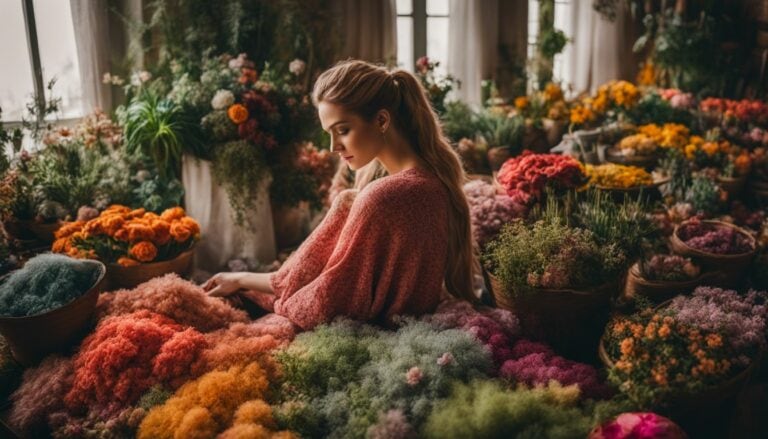Discover Natural Methods: How Can I Darken Fabric Without Dye
How can I darken fabric without dye? Are you searching for a natural way to darken your fabric without the use of commercial dyes? You might be surprised to learn that everyday items like coffee and tea can help lend a darker hue to your fabrics.
In this article, we’ll guide you through step-by-step methods on using these household staples for darkening textiles. Keep reading to transform your fabrics with natural tints in an eco-friendly manner!
Key Takeaways
- Darkening fabric without dye is possible using natural methods such as coffee or tea stains, natural plant materials, and boiling water with vinegar.
- To darken fabric with coffee or tea stains, brew a strong pot of coffee or tea, let it cool down, soak the fabric in the mixture overnight for deep color, and rinse off excess color in the morning.
- Using natural plant materials like onion skins or avocado pits involves boiling them in water for an hour to create a dye bath. Immerse the fabric in the hot liquid and let it soak before rinsing thoroughly.
- Boiling fabric in a mixture of water and vinegar can also darken it. Simmer the fabric for an hour in equal parts water and vinegar to achieve a darker shade. Rinse afterwards.
How Can I Darken Fabric Without Dye
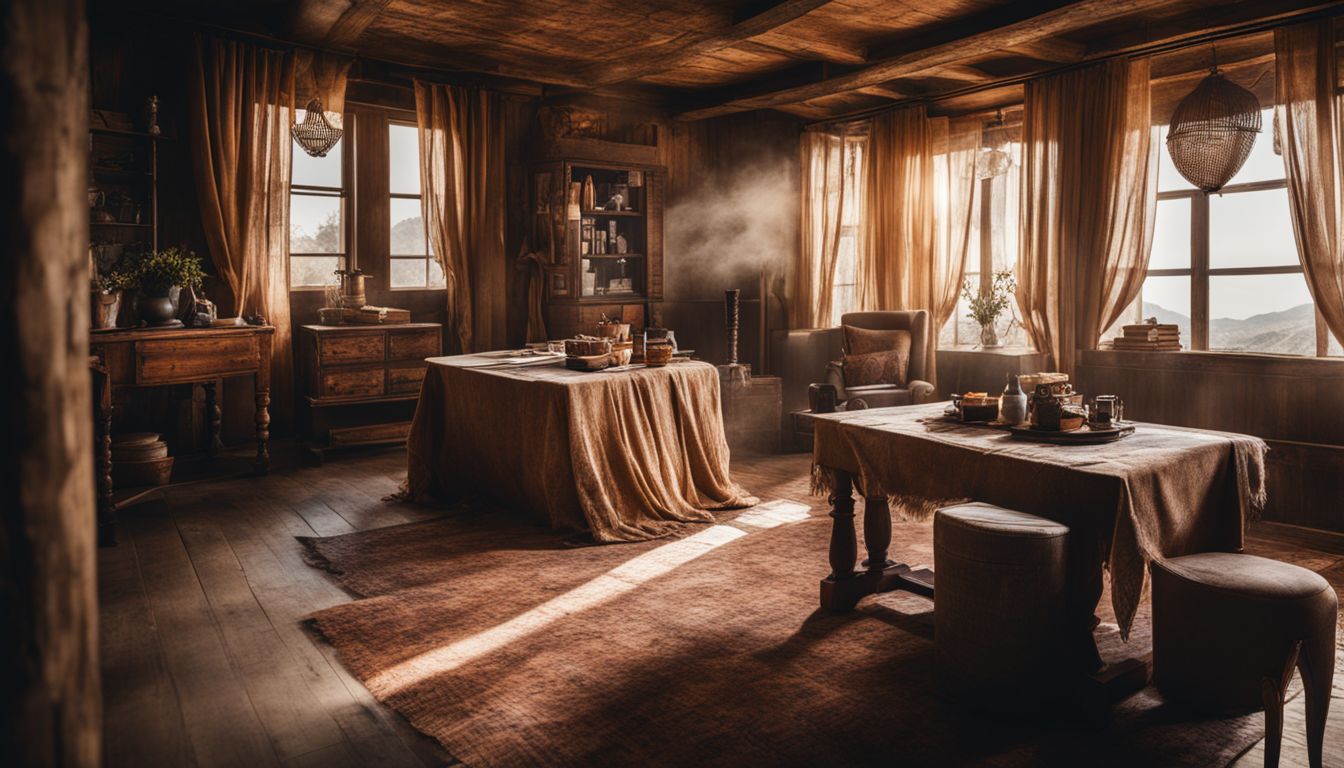
You can darken fabric without dyeing it by using coffee or tea stains, natural plant materials, or boiling water and vinegar.
Using Coffee or Tea Stains

You can darken fabric using coffee or tea. First, brew a strong pot of coffee or tea. For dark brown, make it very potent. Let it cool down for a while till it’s lukewarm. Then put your fabric in the pot to soak up the liquid.
Let them sit overnight if you want a deep color. In the morning, take out the fabric and rinse off excess color with cold water.
Using Natural Plant Materials
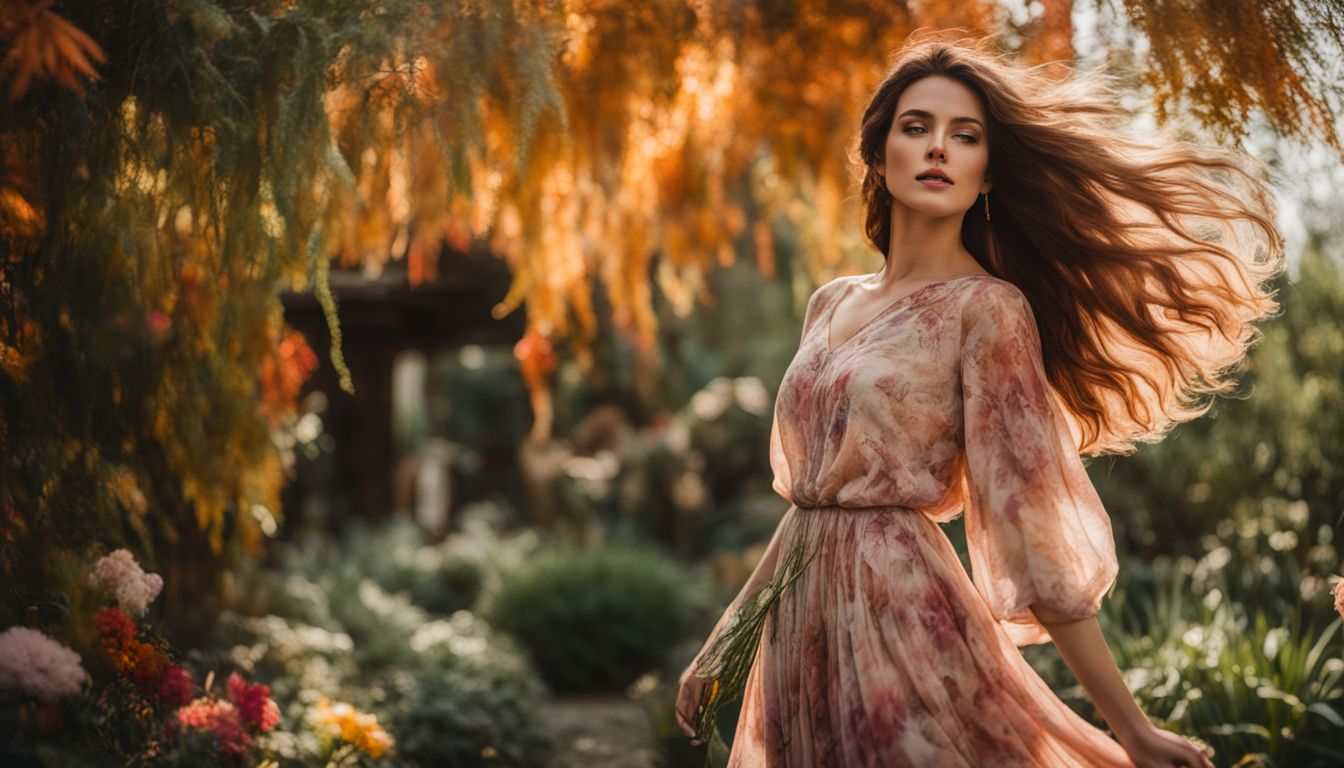
You can also darken fabric by using natural plant materials. Some plants contain pigments that can dye fabric and create beautiful colors. For example, you can use onion skins to achieve a golden yellow color or avocado pits to get a soft pink hue.
To do this, you will need to collect the desired plant materials and boil them in water for about an hour. Then, strain the liquid and immerse your fabric in the dye bath while it is still hot.
Let it soak for at least an hour or overnight for darker shades. Rinse the fabric thoroughly and let it dry. Remember that natural dyes may fade over time, so it’s important to properly care for your dyed fabrics by washing them gently and avoiding prolonged exposure to sunlight.
Using Boiling Water and Vinegar

You can darken fabric without using commercial dyes by using boiling water and vinegar. This method involves soaking the fabric in a mixture of hot water and vinegar to achieve a darker color.
The hot water helps open up the fibers of the fabric, allowing it to absorb more dye, while the vinegar acts as a fixative to help set the color. By boiling the fabric in this solution, you can effectively darken its original color.
This natural method is easy to do at home and does not require any harsh chemicals or synthetic dyes.
Preparing the Fabric

To ensure optimal results when darkening fabric without dye, it is important to properly prepare the fabric beforehand. This involves washing and drying the fabric thoroughly to remove any dirt, stains, or chemicals that may interfere with the darkening process.
Additionally, it is essential to protect surrounding surfaces from potential spills or stains by covering them with plastic or newspaper.
Washing and Drying the Fabric

To prepare the fabric for darkening, it’s important to wash and dry it properly. Start by washing the fabric in cold water with a mild detergent. This will remove any dirt or residue that may affect the dyeing process.
After washing, make sure to thoroughly rinse out all of the soap from the fabric. Once clean, gently squeeze out any excess water without wringing or twisting the fabric too much. To dry the fabric, lay it flat on a clean surface or hang it up to air-dry.
Avoid exposing it to direct sunlight as this can fade the color of the fabric. It’s also important not to use high heat when drying as this can cause shrinkage or damage to certain fabrics.
Protecting Surrounding Surfaces
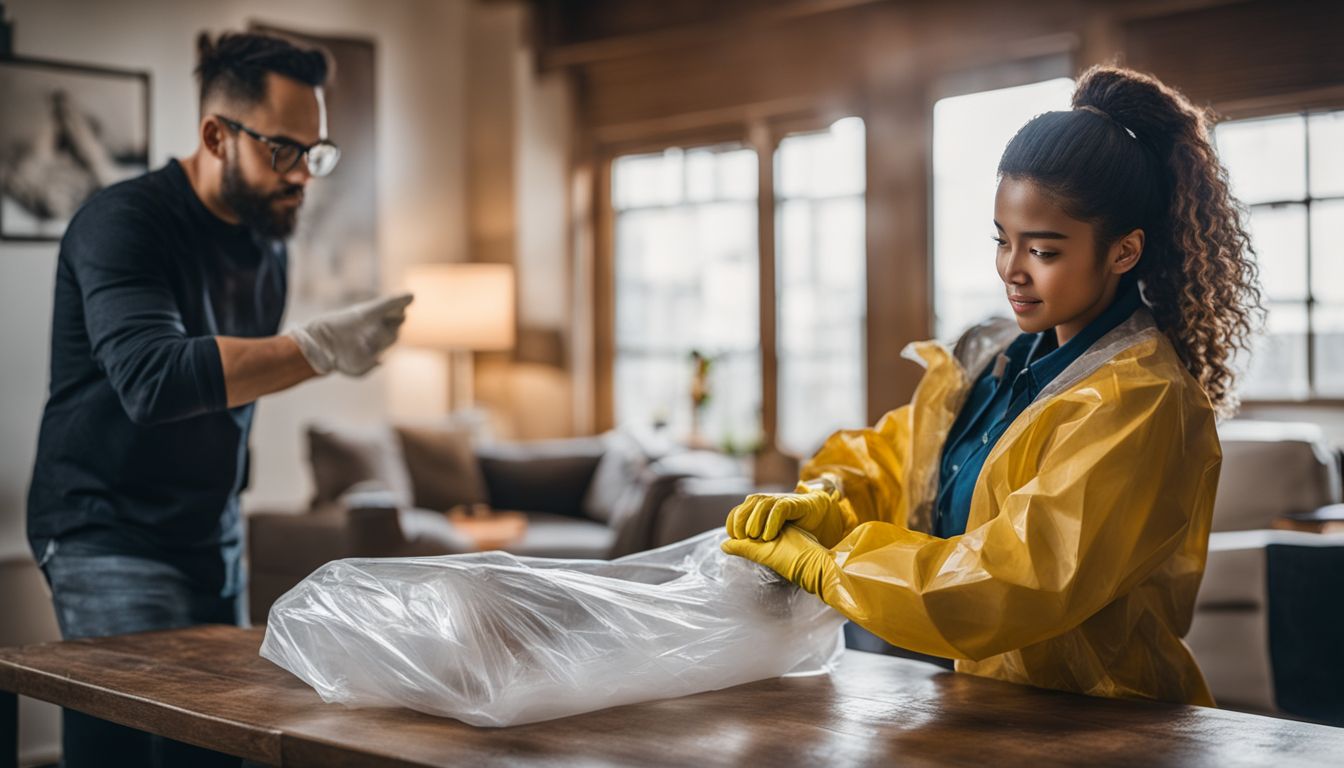
When darkening fabric without dye, it is important to protect the surfaces around you. Spills and drips can happen, so it’s a good idea to lay down newspaper or use a plastic tablecloth to catch any potential mess.
You can also consider doing this process outdoors or in an area that is easy to clean up. This will help prevent any stains or damage to your furniture or floors. Taking these precautions will ensure that the process of darkening your fabric goes smoothly and without causing any unwanted messes.
Applying the Darkening Method

To darken fabric without dye, you can soak the fabric in coffee or tea, simmer it with natural plant materials, or boil it in water and vinegar.
Soaking Fabric in Coffee or Tea
One method to darken fabric without using commercial dyes is by soaking it in coffee or tea. By creating a mixture of hot water and vinegar, you can immerse the fabric in this solution to achieve a darker color.
Coffee and cinnamon can also be used to stain the fabric and create various shades of brown. Tea, on the other hand, can produce different shades of brown as well. It’s important to note that coffee dye is not permanent and may fade over time if not properly cared for.
Simmering Fabric with Natural Plant Materials
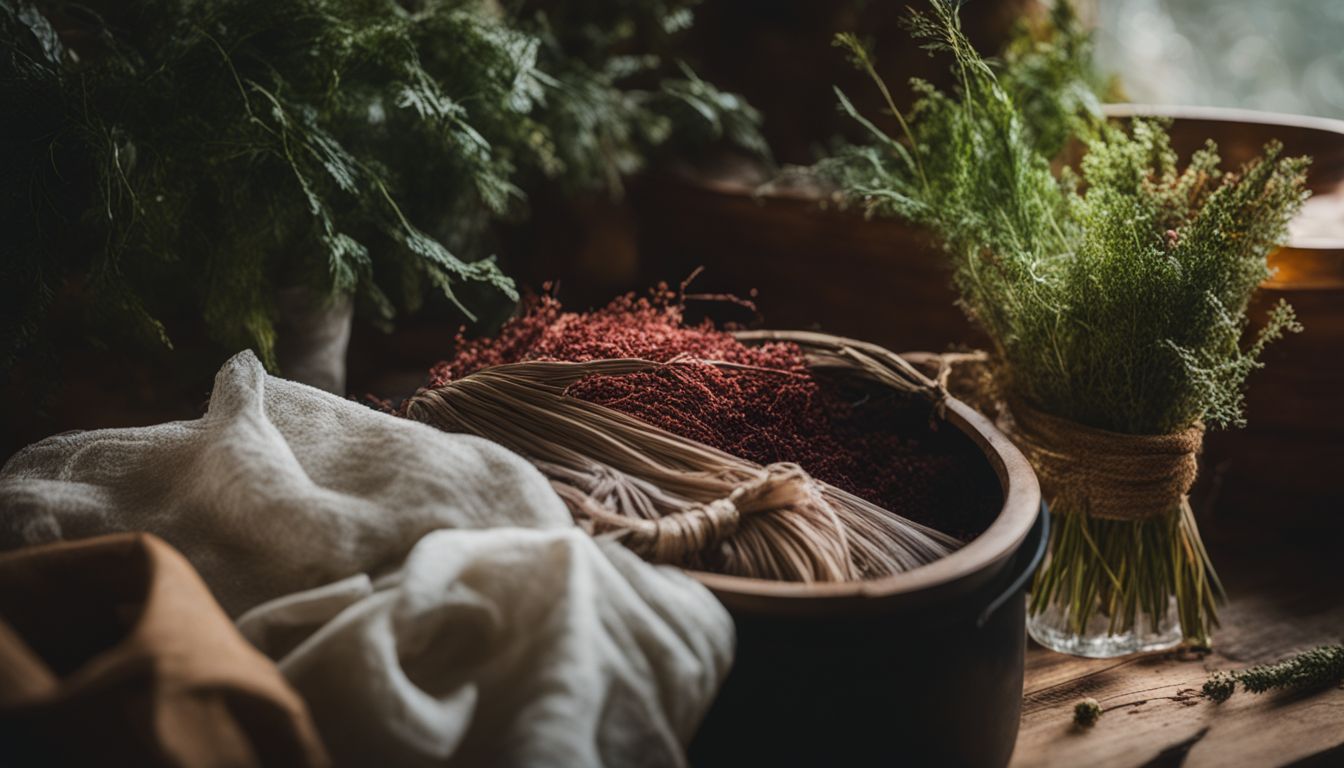
One way to darken fabric without using dye is by simmering it with natural plant materials. Certain plants, such as onion skins, avocado pits, or walnut hulls, can be boiled to create a dye solution.
To do this, you’ll need to gather the plant materials and prepare them by crushing or chopping them up into small pieces. Then, place the plant materials in a pot of water and bring it to a simmer.
Allow the mixture to simmer for about an hour or until the water takes on the desired color. Next, strain out any solid particles from the liquid and submerge your fabric into the dye bath while it’s still hot.
Boiling Fabric in Water and Vinegar

One method to darken fabric without using commercial dyes is by boiling it in a mixture of water and vinegar. This can be done by combining equal parts water and vinegar in a pot and bringing it to a boil.
Once the mixture is boiling, the fabric can be added and simmered for about an hour. The acid in the vinegar helps to set the color, resulting in a darker shade. After boiling, the fabric should be rinsed thoroughly with cold water to remove any excess dye.
However, it’s important to note that this method may not produce permanent results, so proper care should be taken when washing the fabric in the future.
Drying and Setting the Color

After darkening the fabric using one of the natural methods mentioned, it is important to properly dry and set the color. This step ensures that the color lasts longer and remains vibrant.
Read on to learn more about drying and setting techniques for your newly darkened fabric.
Air Drying
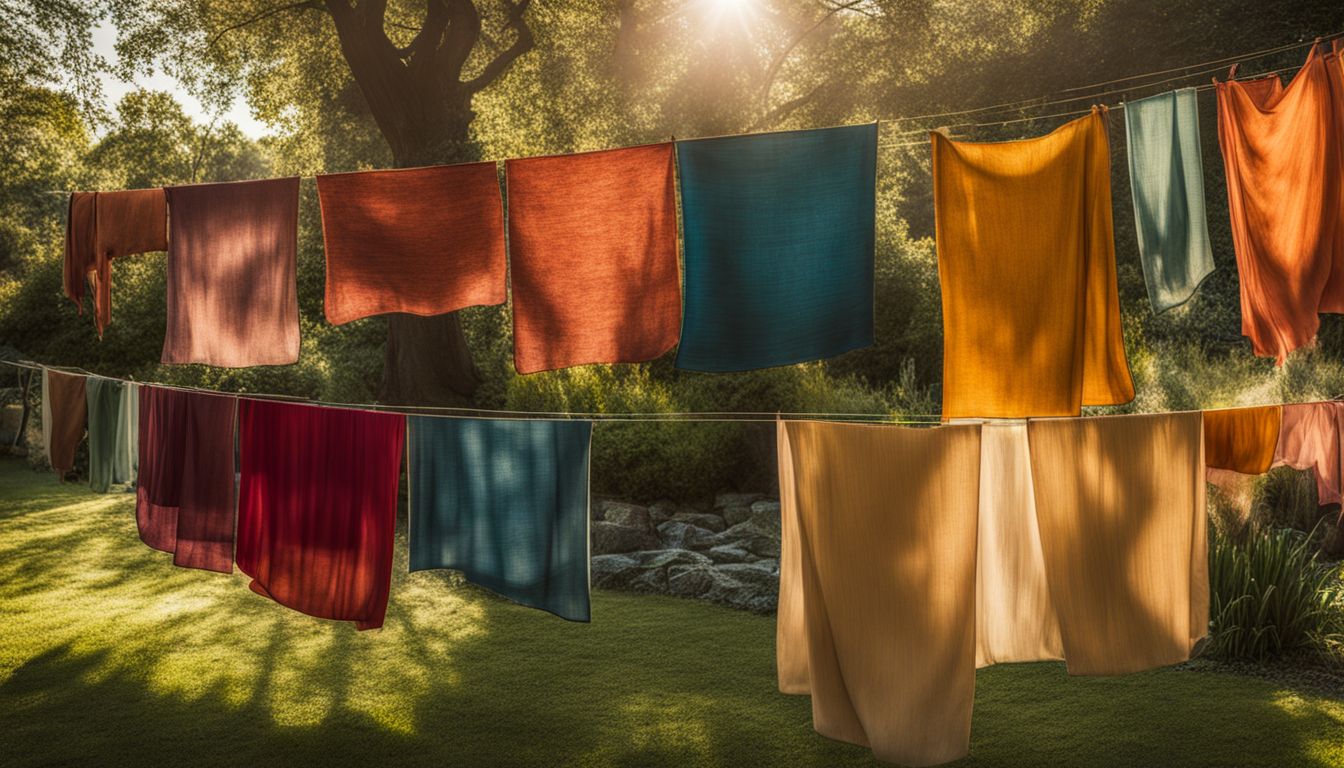
Air drying is a simple and natural way to dry fabric after applying the darkening method. Once you have finished soaking or boiling your fabric, gently squeeze out the excess liquid.
Then, find a well-ventilated area where you can hang the fabric up to dry. Make sure to choose a spot away from direct sunlight to prevent color fading. Allow the fabric to air dry completely before using or laundering it.
This method is convenient and doesn’t require any additional tools or equipment. It’s important to note that air drying may take longer compared to using heat setting methods, but it helps preserve the color of your newly darkened fabric without any extra effort on your part.
Heat Setting

To ensure that the color you’ve achieved through natural dyeing methods stays on your fabric, it’s important to heat set it. Heat setting helps to make the color more permanent and prevents it from fading or washing out easily.
There are a few different ways to heat set your fabric, but one common method is to use an iron. After the dyeing process is complete and your fabric is dry, place a clean cloth over the dyed area and press down with a hot iron for about 3-5 minutes.
This will help to “set” the color into the fibers of the fabric. Make sure to check and follow any specific instructions provided with your particular dye or material, as different fabrics may require slightly different heat setting techniques.
Conclusion
In conclusion, there are natural ways to darken fabric without using traditional dyes. Techniques such as staining with coffee or tea, using plant materials, and boiling water with vinegar can help achieve a darker color.
It’s important to properly prepare the fabric and set the color for long-lasting results. So next time you want to darken your fabric, try these dye-free methods for a more environmentally friendly option.
FAQs
1. Can I darken fabric without using dye?
Yes, you can darken fabric without using dye by using certain natural methods such as tea or coffee staining, vinegar soaking, or exposure to sunlight.
2. How does tea staining darken fabric?
Tea staining involves brewing strong tea and then soaking the fabric in it for a period of time. The tannins in the tea will gradually darken the fabric.
3. What is vinegar soaking and how does it work?
Vinegar soaking involves mixing equal parts of water and white vinegar and then soaking the fabric in the solution for some time. The acid in vinegar can help darken certain types of fabrics.
4. Can sunlight darken fabric naturally?
Yes, prolonged exposure to direct sunlight can naturally darken some types of fabrics over time due to the effects of UV rays on their pigments or dyes.





